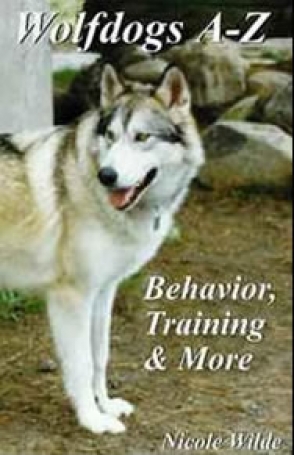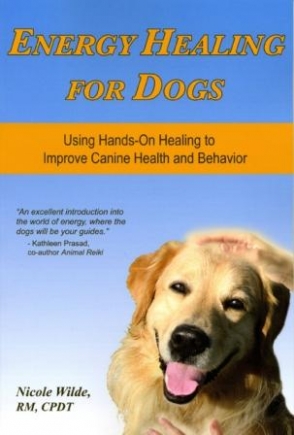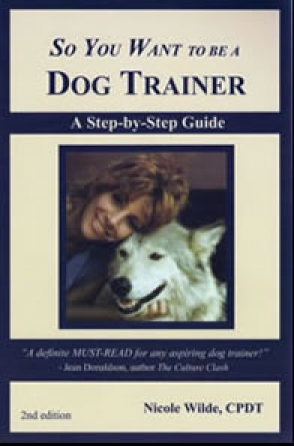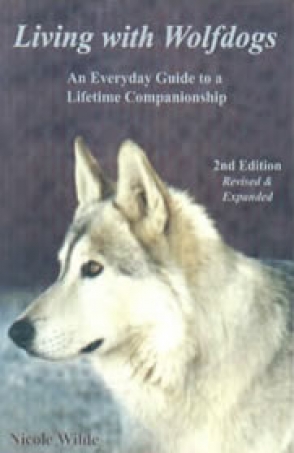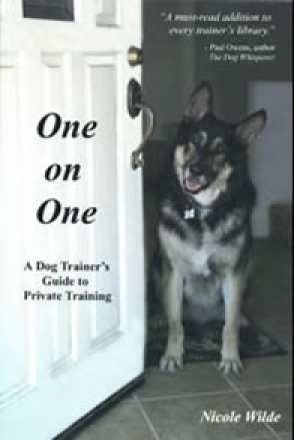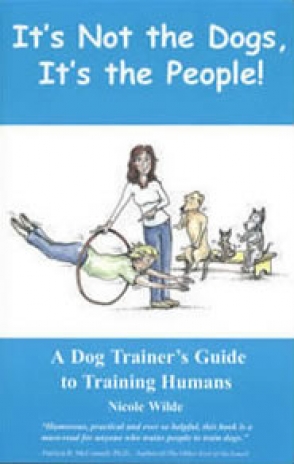Nicole Wilde has worked with wolfdog (aka wolf hybrid) rescue, education and training for over fifteen years.
The Hazards of Overexposure
Having a new dog has gotten me out to the park mostly every day, rain or shine. This has been a good thing for both of us. I enjoy being outdoors and socializing, and Sierra loves to run, play, and wrestle with the other dogs. Many trainers are not fans of dog parks; I am, as long as they’re well planned and people are vigilant about controlling their dogs. The park we frequent is large and completely enclosed, has a double-gated entry system, dispenser with free poop bags (along with plenty of shovels and garbage cans), and a separate area (also double-gated) for small dogs. What it also has from time to time, unfortunately, are owners who believe their dog-reactive dog will become less so simply by letting him romp with other dogs.
There are owners who stand just outside the chain link fence with their dog on leash, and correct the dog each time it lunges at the dog on the other side of the fence. I’ve seen this happen twice. The first time, a woman with a large pinch collar on her very large pit bull jerked him roughly each time he reacted, while simultaneously spraying him with something that resembled a can of citronella. She said she was following her trainer’s instructions, and as she’d paid quite a bit for the lessons, she wanted to keep it up. (If a medication wasn’t working, would you keep taking it just because it was expensive?) The second dog was a large German Shepherd wearing a Gentle Leader. His owners weren’t jerking him, but when Sierra approached from inside the park (she’s deemed herself Official Park Greeter), he lunged and snapped. Had I not grabbed her before she reached the fence, contact could have been made. I was hoping our resultant conversation, where I made some polite suggestions and offered my card, made some impact; but, not long after, they were back at it.
An even worse situation occurs when owners bring their reactive or aggressive dog into the park on leash. You wouldn’t think this practice is common, but it is. The leashed dog, being restrained as he is, feels defensive when other dogs run up to greet him. Some will inevitably try to engage him in play, which may involve jumping on him, putting a paw on him, or other gesture that, if the dog were off-leash, might not be a problem. The result is all too often a dog who reacts. The owner then pulls the dog away and repeats the interaction in another part of the park. (Some dogs are reactive only on leash, but I’m not suggesting owners find out by turning them loose!)
There are dogs at the park who wear muzzles. There are all too many wearing shock collars “in case they get into it with another dog.” Really? If your dog is that likely to fight, he doesn’t belong at the dog park!
It’s true that dogs who are mildly nervous around other dogs may habituate to them through repeated contact. But a dog who is already reactive or even aggressive is most likely not going to get better simply through repeated exposure. In fact, he’ll probably get better at fighting, and may become more, instead of less, sensitized to the presence of other dogs. I’ve seen many dogs remain in the park even after they’ve had a skirmish—which is the time they’re most likely to get into another one, as they’re already overly aroused.
There are many ways to work with dogs who are reactive to other dogs, including gradual desensitization and counterconditioning. What these gentle, effective techniques have in common is that they take it a step at a time and set the dog up to succeed. Dogs are carefully managed, and often a trainer will use their own “bombproof” dogs to help the dog get used to others. What none of these plans suggest is exposing the dog to a large group of other dogs who are an unknown quantity, in an uncontrolled manner. Overexposure now does not make up for underexposure earlier in life, and it can have a detrimental effect—not only to the reactive dog, but to others he encounters.

